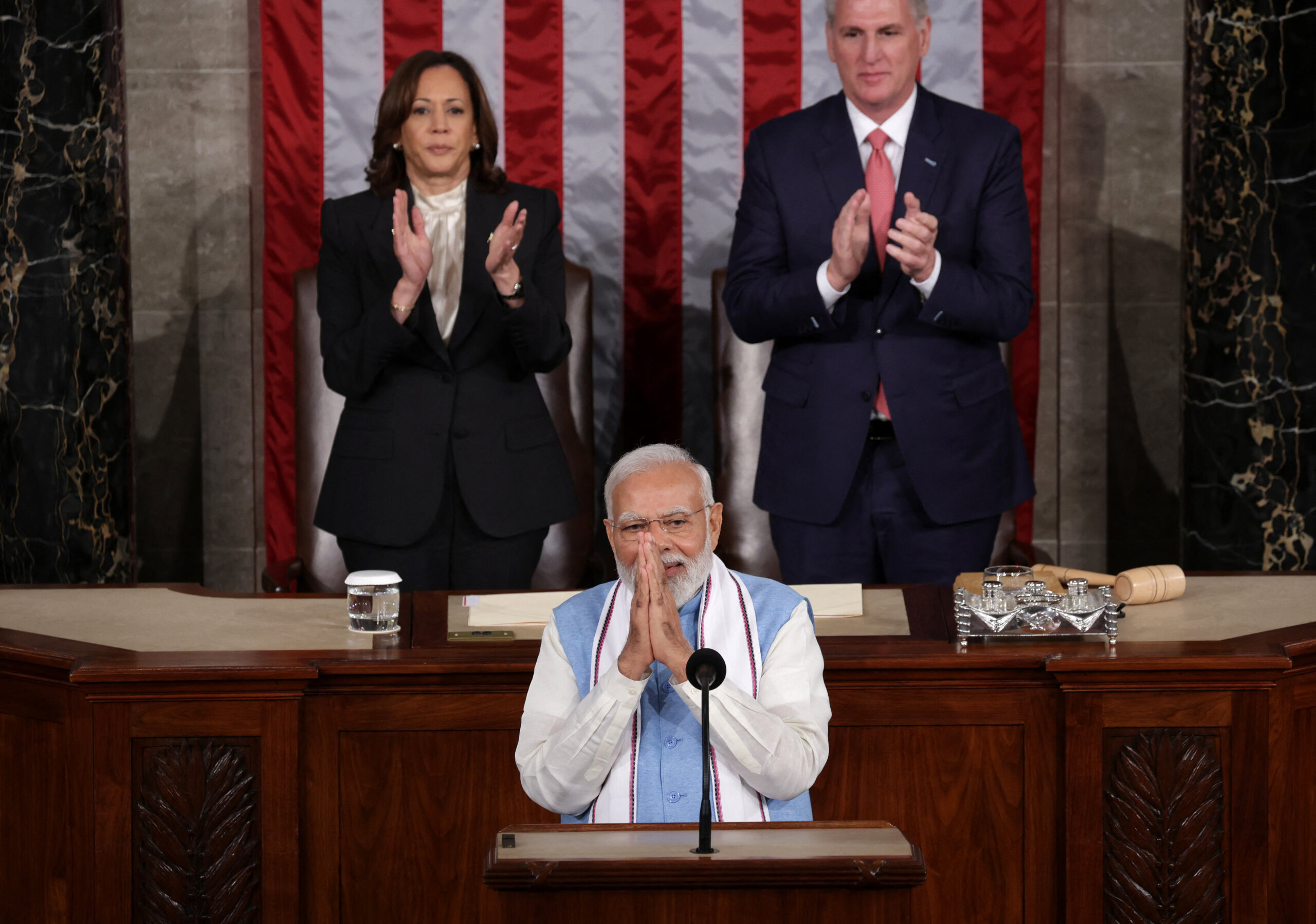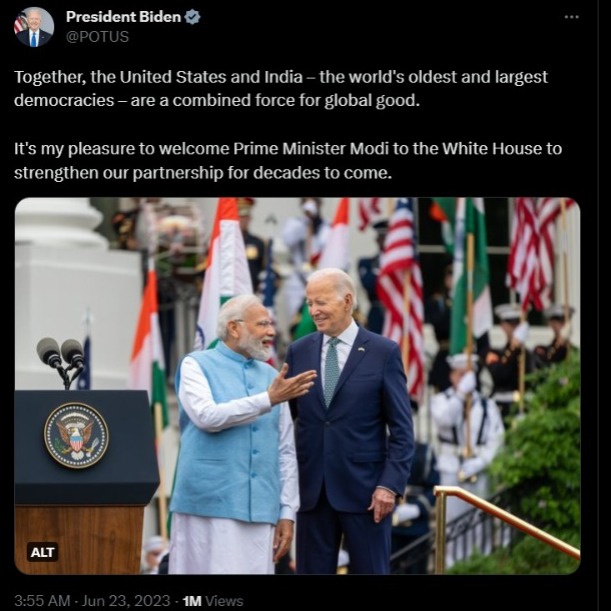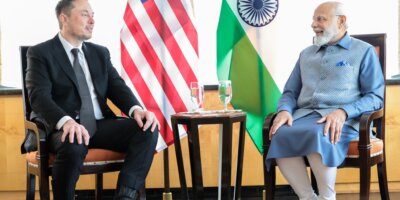
Regarding the relations between US and India, both countries conceptually seem destined to be partners, yet for decades have held remarkably divergent worldviews.Source: AFP
The Biden-Modi meeting might mean a new era of US-India relations
- Both leaders agreed on some defense, trade, and strategic technologies collaboration.
- US chip giant Micron announced plans for India’s first assembly and test facility.
When it comes to US-India relations, both countries seem destined to be partners, yet for decades have held remarkably divergent worldviews. Indian Prime Minister Narendra Modi’s state visit to the US this week is a move on the geopolitical chessboard as President Joe Biden seeks to shore up an alliance against Russia’s aggression and China’s economic influence.
For Modi, the visit is a significant diplomatic prize since he was once denied a visa to the US for his role in religious riots in his home state. For the Biden administration, it seems like a thorough attempt to draw India closer–economically and militarily–needing to accept some imperfect but essential friends.
“President Joseph R. Biden, Jr. and Prime Minister Narendra Modi today affirmed a vision of the United States and India as among the closest partners in the world,” a joint statement from the US and India reads.
When announcing Modi’s state visit, the White House press secretary said the occasion would celebrate “the warm bonds of family and friendship that link Americans and Indians together.” Perhaps like his predecessors, Biden has leaned into the hope that India, the world’s most populous democracy and the fifth-largest economy, will serve as a counterweight to China’s growing global economic heft.
US Treasury Secretary Janet L. Yellen last year visited India as part of the administration’s push to shift global supply chains away from its political and economic adversaries. Regarding India’s standing with the US, the former has refused to join the American-led coalition aiding Ukraine in its war against invading Russian forces.
While India also shares a particular enmity with China, it has not fully subscribed to Washington’s strategy for restraining the Asian giant in the Indo-Pacific region or defending Taiwan against aggression. Of course, during his visit this week, Modi offered no indication that he had changed his mind about Russia or China, much less about human rights at home.
Even during an address to a joint session of Congress after meeting with the president, Modi avoided using the words “Russia” or “China,” sticking to passive formulations.
Key takeaways: Stronger US-India relations?

WASHINGTON, DC – JUNE 22: Indian Prime Minister Narendra Modi delivers remarks to a joint meeting of Congress at the U.S. Capitol on June 22, 2023 in Washington, DC. Modi is on his first official state visit to the United States and has met with President Biden, Congressional leaders and will visit the State Department tomorrow to discuss strengthening India – U.S. relations. (Photo by ALEX WONG / GETTY IMAGES NORTH AMERICA / Getty Images via AFP)
Defense, trade, and strategic technologies
The most crucial agenda from Modi’s state visit was the US’ intention to help India bolster its domestic defense industry while increasing military cooperation between the two countries. It attempts to wean India off its long dependence on Russia for weaponry.
According to local reports, US Defense Secretary Lloyd J. Austin III and the national security adviser, Jake Sullivan, traveled to New Delhi this month before the state visit to lay the groundwork for closer defense partnerships.
At this week’s meeting, both sides announced a deal for co-production in India of engines for fighter aircraft, a US$3 billion purchase of about 30 American Reaper drones by India, and a road map to expand cooperation between the two countries’ defense industries.
There were also agreements on intelligence sharing and space-based, quantum, and other strategic technologies. On space, a report by Reuters indicated that India agreed to join the US-led Artemis Accords on space exploration and to work with NASA on a joint mission to the International Space Station in 2024.
The joint statement by the US and India also highlighted that both Biden and Modi affirm that technology will play a defining role in deepening their partnership. The leaders hailed the Initiative on Critical and Emerging Technology (CET) inauguration in January 2023 as a significant milestone in the US-India relations,” the statement reads.
With that, India and the US have established the Joint Indo-US Quantum Coordination Mechanism on advanced computing relations to facilitate joint research between the public and private sectors across both countries.
US and India on semiconductors
Biden and Modi also signed an MoU on Semiconductor Supply Chain and Innovation Partnership to promote commercial opportunities, research, talent, and skill development. While Modi was in the middle of his first state visit to the US, American memory chip firm Micron Technology announced what would be its first factory in India. Micron said it would invest up to US$825 million in a new chip assembly and test facility in Gujarat.
With additional financial support from Indian authorities, Micron’s investment will amount to a US$2.75-billion semiconductor assembly and test facility in India. Of the total US$2.75 billion, 50% will come from the Centre and 20% from the Gujarat government.
Micron said construction of the new facility in Gujarat is expected to begin in 2023, and the project’s first phase will be operational in late 2024. It said that a second phase of the project is expected to start toward the second half of the decade. The two stages together will create up to 5,000 new direct Micron jobs.
The leaders also welcomed Lam Research’s proposal to train 60,000 Indian engineers through its Semiverse Solution virtual fabrication platform to accelerate India’s semiconductor education and workforce development goals. Applied Materials announced an investment of US$400 million to establish a collaborative engineering center in India.

President Biden’s welcome tweet for Prime Minister Narendra Modi.
Source: Biden’s Twitter
One thing is certain: China will definitely be keeping a close eye on US-India relations. All three countries have issues with each other but it might be less that “the enemy of my enemy is my friend” and more “who’s going to be the real winner” from the friendship.
READ MORE
- Strategies for Democratizing GenAI
- The criticality of endpoint management in cybersecurity and operations
- Ethical AI: The renewed importance of safeguarding data and customer privacy in Generative AI applications
- How Japan balances AI-driven opportunities with cybersecurity needs
- Deploying SASE: Benchmarking your approach


